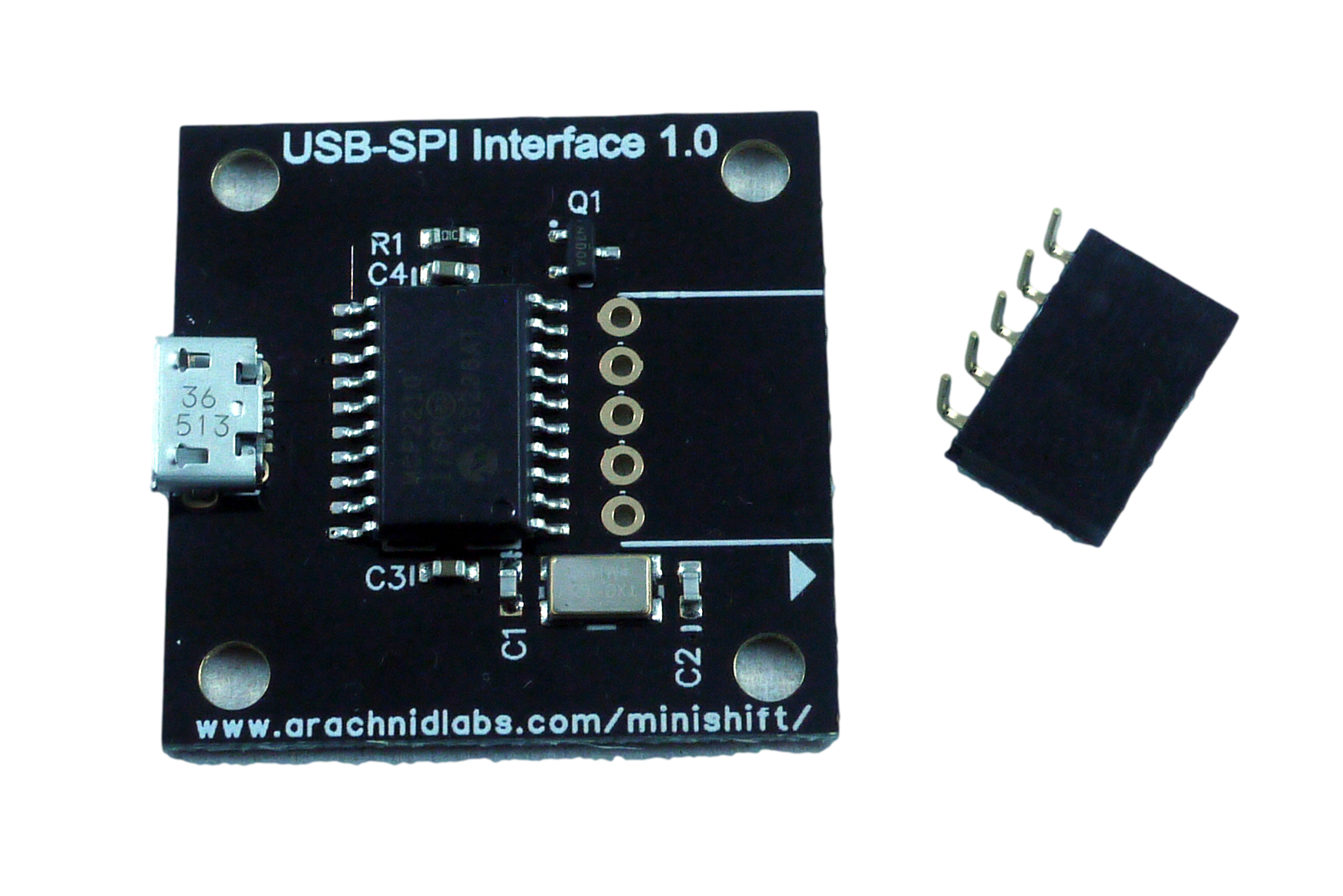Minishift
Minishift is now available for preorder! Get yours here!
The Minishift is a compact and affordable 8x8 LED matrix display that speaks SPI, and can be driven from any microcontroller platform, or with an optional interface board, over USB.

Each Minishift module operates independently, and they chain together to form larger displays, limited only by the amount of power you can supply them. They speak a trivial SPI protocol, with each display acting like an 8 byte shift register, making it extremely easy to work with them. Sample code for the Arduino will be available before preorders ship.

An optional USB-SPI interface is available, which makes it easy to drive a series of Minishifts from your computer. Python libraries and sample code, as well as a display driver daemon, will also be available soon. The USB interface can drive 8-9 Minishifts fully lit, or more if you will only be displaying text or other graphics that don’t light all the LEDs at once.

Minishifts and the USB interface are sold as kits, with all surface mount parts populated, leaving only the connectors and LED matrix to solder yourself. Full instructions are provided.
Specifications
Minishift
- 64 LEDs in an 8x8 matrix
- Operates at 5v or 3.3v (5v recommended for maximum brightness)
- Integrated controller acts like an SPI shift register
- Chainable to create larger displays
- <5mA idle current usage each, rising to approximately 60mA with all LEDs on
- Integrated mounting holes allow attachment to enclosures, mounting plates, etc
USB Interface
- Uses the MCP2210 USB-SPI bridge
- Provides a HID interface; no OS drivers required
- Python libraries available soon, functional on OSX, Linux and Windows
- Supplies up to 500mA to Minishifts (8-9 fully illuminated, or more partially illuminated)
Source
Full source code and schematics for the Minishift and related libraries are available on GitHub.
